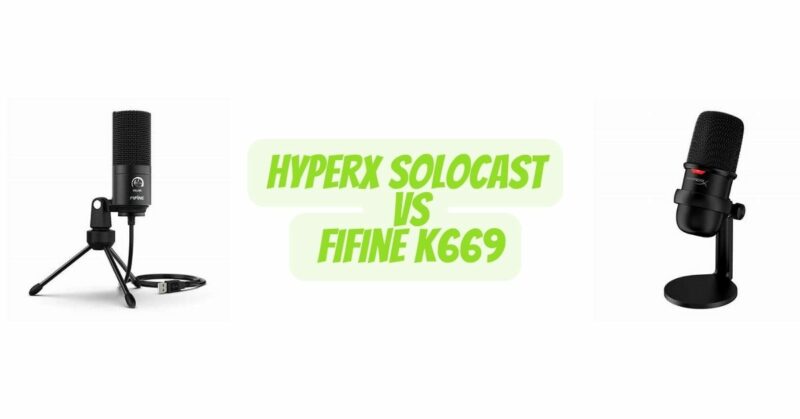USB microphones have become essential tools for content creators, streamers, podcasters, and other professionals who require high-quality audio capture. In this article, we will compare two popular USB microphones, the HyperX SoloCast and the Fifine K669. Both microphones offer convenience and simplicity, but they differ in terms of design, sound quality, features, and pricing. By examining these key aspects, we aim to assist you in choosing the ideal USB microphone for your needs.
Design and Build Quality
The design and build quality of a microphone play a crucial role in its usability and durability. The HyperX SoloCast features a sleek and compact design, making it ideal for users with limited desk space. It comes with a sturdy desktop stand and a durable metal construction. In contrast, the Fifine K669 showcases a more traditional microphone design with a metal body and a stable tripod stand. Consider your setup requirements and aesthetic preferences when evaluating the design and build quality of both microphones.
Sound Quality and Performance
Sound quality is a primary consideration when choosing a USB microphone. The HyperX SoloCast utilizes a condenser microphone capsule with a cardioid polar pattern, capturing sound from the front while minimizing background noise. It offers a wide frequency response range, resulting in clear and detailed audio reproduction. The Fifine K669 also features a cardioid polar pattern and delivers decent sound quality, although it may not match the level of clarity and detail provided by the SoloCast. Consider the intended use of the microphone and your expectations for audio performance.
Connectivity and Compatibility
Both the HyperX SoloCast and the Fifine K669 offer plug-and-play USB connectivity, making them compatible with various devices such as computers, laptops, and gaming consoles. The SoloCast and K669 require no additional drivers or software installation, ensuring a hassle-free setup process. However, it’s important to note that the Fifine K669 is solely USB-powered, while the HyperX SoloCast requires USB power and audio output separately. Consider your specific device compatibility requirements when evaluating the connectivity options.
Features and Controls
When comparing features and controls, the HyperX SoloCast offers a simple and streamlined experience. It includes a touch-sensitive mute button conveniently located on top of the microphone, allowing for easy control during recordings. The Fifine K669, on the other hand, provides basic volume control on the microphone itself, enabling on-the-fly adjustments. Neither microphone offers advanced features such as gain control or multiple polar patterns, making them suitable for users who prioritize simplicity and ease of use.
Price and Value
Price is an important factor to consider when choosing a USB microphone. The HyperX SoloCast is positioned at a slightly higher price point compared to the Fifine K669. The SoloCast’s pricing reflects its brand reputation, build quality, and sound performance. However, the Fifine K669 offers an attractive budget-friendly option without compromising too much on quality. Consider your budget and the value each microphone provides in terms of sound quality, design, and additional features.
User Reviews and Feedback
To gain a better understanding of the user experience, it’s essential to consider the opinions and feedback of individuals who have used the HyperX SoloCast and the Fifine K669. Research and gather insights from user reviews to identify common strengths and weaknesses of both microphones. Pay attention to aspects such as ease of setup, audio quality, and overall satisfaction reported by users. This information can help provide a balanced perspective and assist in making an informed decision.
Conclusion
Choosing between the HyperX SoloCast and the Fifine K669 depends on your specific requirements, budget, and preferences. The HyperX SoloCast offers a compact design, superior sound quality, and a reputable brand, making it a suitable choice for those seeking a reliable USB microphone with enhanced performance. On the other hand, the Fifine K669 provides an affordable option without compromising too much on quality, making it a viable solution for beginners or those with budget constraints. Consider the factors discussed in this article to determine which microphone best aligns with your needs and budget, ultimately enhancing your audio recording experience.


